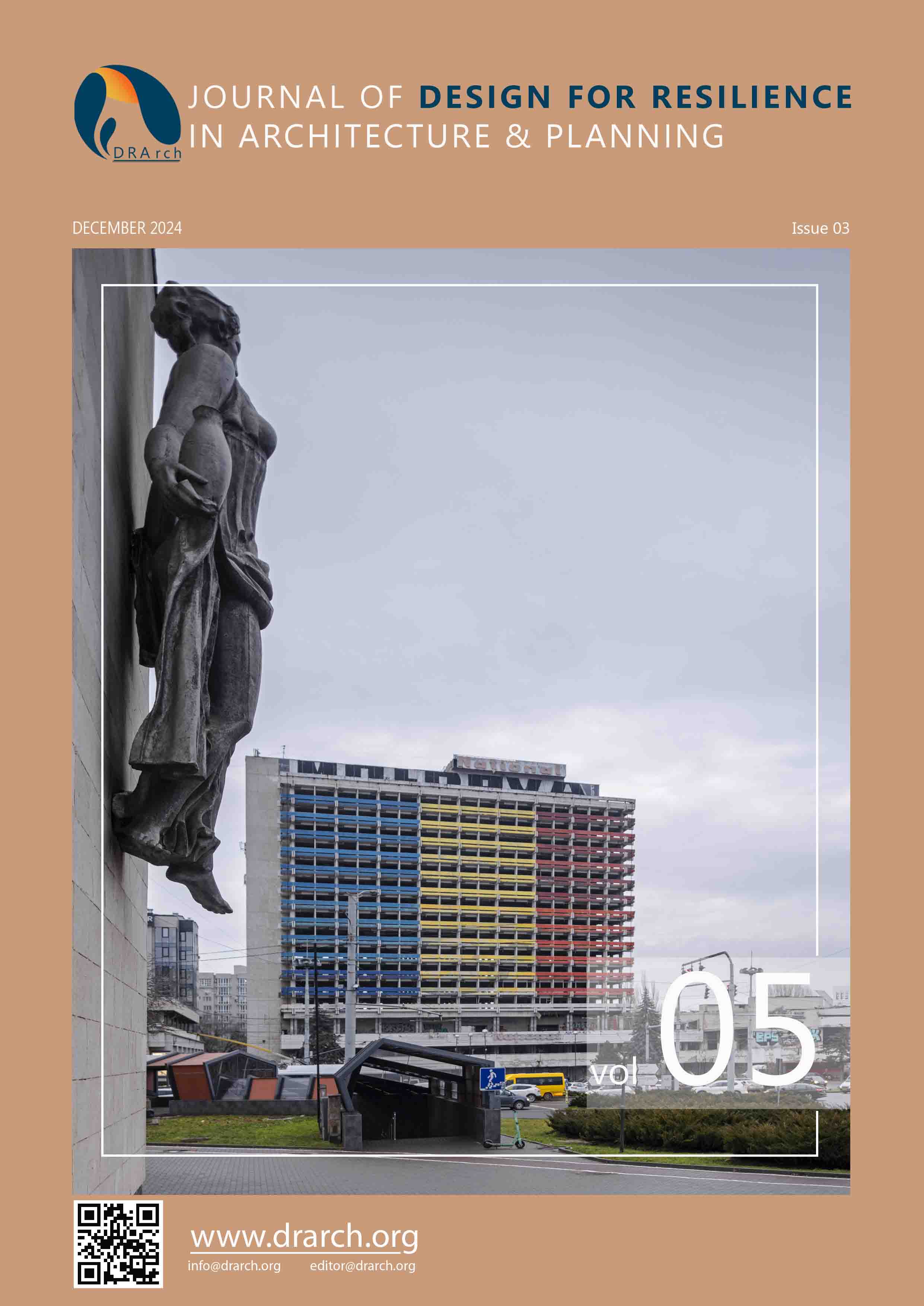The effects of Sinop province’s relative humidity values on bioclimatic comfort and urban and landscape planning
DOI:
https://doi.org/10.47818/DRArch.2024.v5i3139Keywords:
climate data, humidity and environmental effects, relative humidity, seasonal relative humidity changesAbstract
This study examines the monthly average relative humidity values in different districts of Sinop province and evaluates the impact of these data on urban and landscape planning. The relative humidity rates from January to December showed significant differences between districts. The highest relative humidity values were mostly observed in the Erfelek district, while the lowest values were recorded in the Türkeli and Boyabat districts. Seasonal changes caused fluctuations in relative humidity rates, with higher humidity levels detected particularly during the winter months. These data are crucial for understanding the climatic conditions of Sinop province and for making strategic decisions in areas such as agriculture, water management, and urban planning. The study specifically recommends the development of landscape planning and water conservation strategies in areas with high relative humidity. Additionally, it emphasizes the need to study the long-term effects of climate change and the necessity of continuous monitoring. Finally, this study provides an important data source for local governments and future research.
Downloads
References
Abbaspour, K. C., Faramarzi, M., Ghasemi, S. S., & Yang, H. (2009). Assessing the impact of climate change on water resources in Iran. Water Resources Research, 45(10).
Allen, C. D., Macalady, A. K., Chenchouni, H., Bachelet, D., Hogg, E. H., & González, P. (2011). A global overview of drought and heat-induced tree mortality reveals emerging climate change risks for forests. Forest Ecology and Management, 259(4), 660-684. https://doi.org/10.1016/j.foreco.2010.12.002
Allen, R. G., Pereira, L. S., Raes, D., & Smith, M. (1998). Crop evapotranspiration-guidelines for computing crop water requirements-FAO irrigation and drainage paper 56. FAO, Rome, 300(9), D05109.
Bhaduri, A., Coleman, D., & Hodge, S. (2010). A water management approach to assess the potential impact of climate change on water resources. Journal of Water Resources Planning and Management.
Danneberger, T. K. (2000). Effects of humidity on plant growth. In Plant-Environment Interactions (pp. 361-378). CRC Press.
Güven, A., Akçay, M. M., & Yıldırım, A. (2016). The effect of climate change on agricultural productivity in the Black Sea region of Turkey. Climate Research, 71(2), 179-188.
Kumar, S., & Singh, R. (2014). Climate change and its impact on agriculture and natural resources: A review. International Journal of Environmental Science and Development, 5(5), 447-451.
Lobell, D. B., Schlenker, W., & Costa-Roberts, J. (2011). Climate trends and global crop production since 1980. Science, 333(6042), 616-620.
Pereira, L. S., Cordery, I., & Iacovides, I. (2002). Coping with water scarcity: a global perspective. Irrigation and Drainage Systems, 16(1), 61-65.
Sinha, A., Su, Y., & Liu, S. (2020). Impact of temperature and humidity on crop yield. Agricultural Systems.
Sinop Provincial Directorate of Culture and Tourism-T.C. Ministry of Culture and Tourism. “General Information”. Access on: 15/04/2024 https://sinop.ktb.gov.tr/TR-74775/genel-bilgiler.html
Turkish General Directorate of Meteorology. “MGM Climate data”. Access on: 15/04/2024 https://www.mgm.gov.tr/veridegerlendirme
Tzoulas, K., Korpela, K., Venn, S., Yli-Pelkonen, V., Kaźmierczak, A., Niemela, J., & James, P. (2007). Promoting ecosystem and human health in urban areas using green infrastructure: A literature review. Landscape and Urban Planning, 81(3), 167-178.
Viviroli, D., Archer, D. R., Buytaert, W., Fowler, H. J., Greenwood, G. B., Hamlet, A. F., Huang, Y., Koboltschnig, G., Litaor, M. I., López-Moreno, J. I., Lorentz, S., Schädler, B., Schreier, H., Schwaiger, K., Vuille, M., & Woods, R. (2011). Climate change and mountain water resources: overview and recommendations for research, management and policy. Hydrology and Earth System Sciences, 15(2), 471-504.
Downloads
Published
Issue
Section
License
Copyright (c) 2024 İlknur Zeren Çetin

This work is licensed under a Creative Commons Attribution 4.0 International License.








